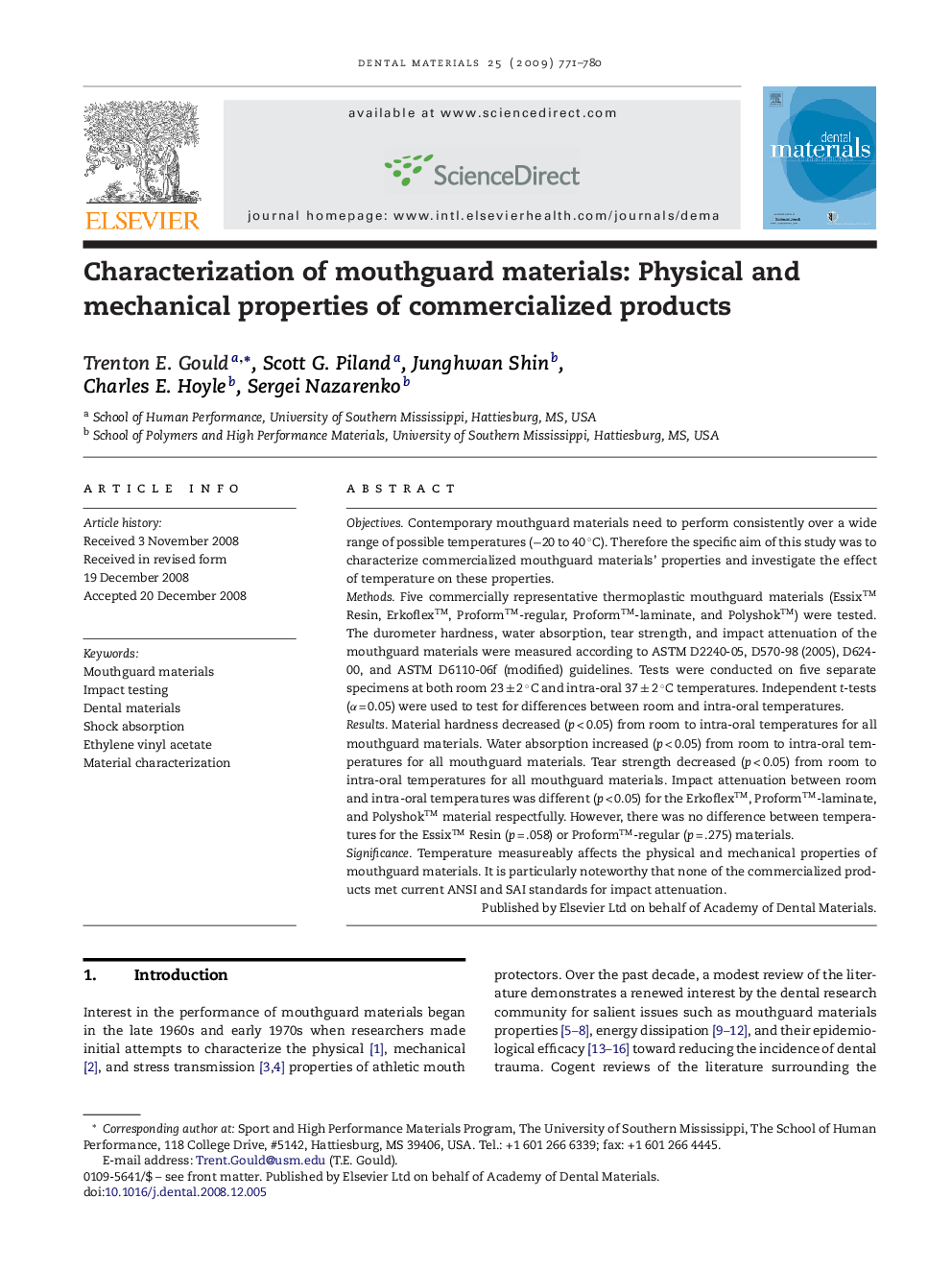| Article ID | Journal | Published Year | Pages | File Type |
|---|---|---|---|---|
| 1422342 | Dental Materials | 2009 | 10 Pages |
ObjectivesContemporary mouthguard materials need to perform consistently over a wide range of possible temperatures (−20 to 40 °C). Therefore the specific aim of this study was to characterize commercialized mouthguard materials’ properties and investigate the effect of temperature on these properties.MethodsFive commercially representative thermoplastic mouthguard materials (Essix™ Resin, Erkoflex™, Proform™-regular, Proform™-laminate, and Polyshok™) were tested. The durometer hardness, water absorption, tear strength, and impact attenuation of the mouthguard materials were measured according to ASTM D2240-05, D570-98 (2005), D624-00, and ASTM D6110-06f (modified) guidelines. Tests were conducted on five separate specimens at both room 23 ± 2 °C and intra-oral 37 ± 2 °C temperatures. Independent t-tests (α = 0.05) were used to test for differences between room and intra-oral temperatures.ResultsMaterial hardness decreased (p < 0.05) from room to intra-oral temperatures for all mouthguard materials. Water absorption increased (p < 0.05) from room to intra-oral temperatures for all mouthguard materials. Tear strength decreased (p < 0.05) from room to intra-oral temperatures for all mouthguard materials. Impact attenuation between room and intra-oral temperatures was different (p < 0.05) for the Erkoflex™, Proform™-laminate, and Polyshok™ material respectfully. However, there was no difference between temperatures for the Essix™ Resin (p = .058) or Proform™-regular (p = .275) materials.SignificanceTemperature measureably affects the physical and mechanical properties of mouthguard materials. It is particularly noteworthy that none of the commercialized products met current ANSI and SAI standards for impact attenuation.
